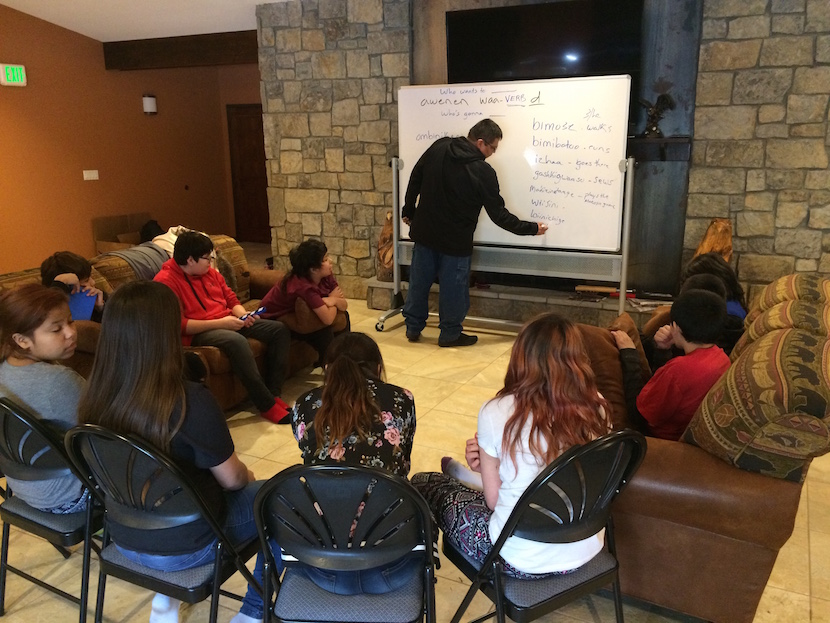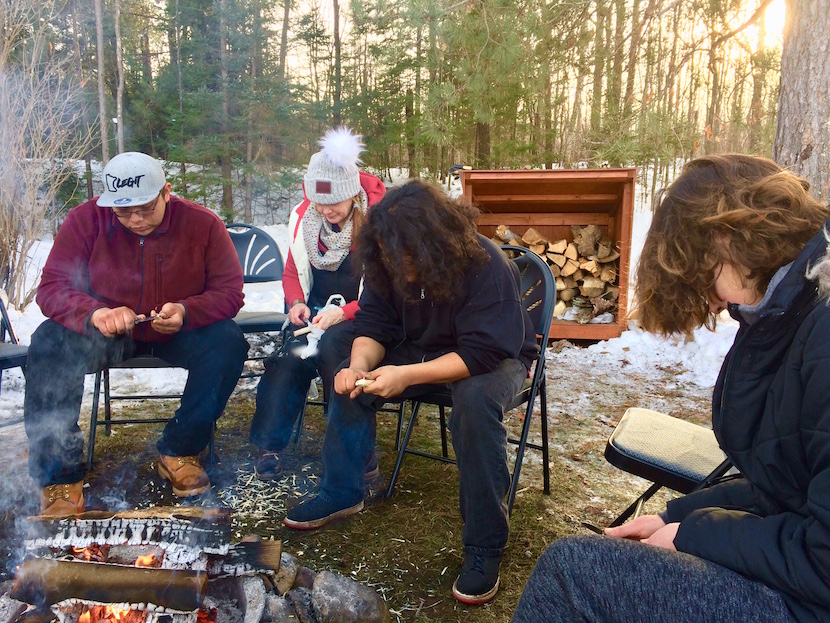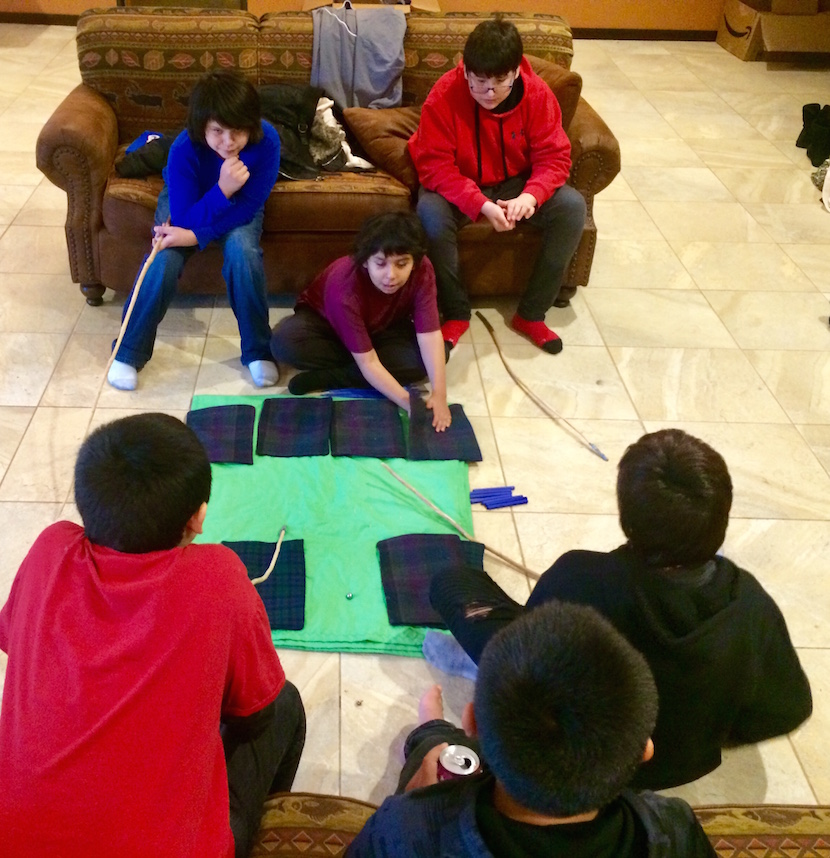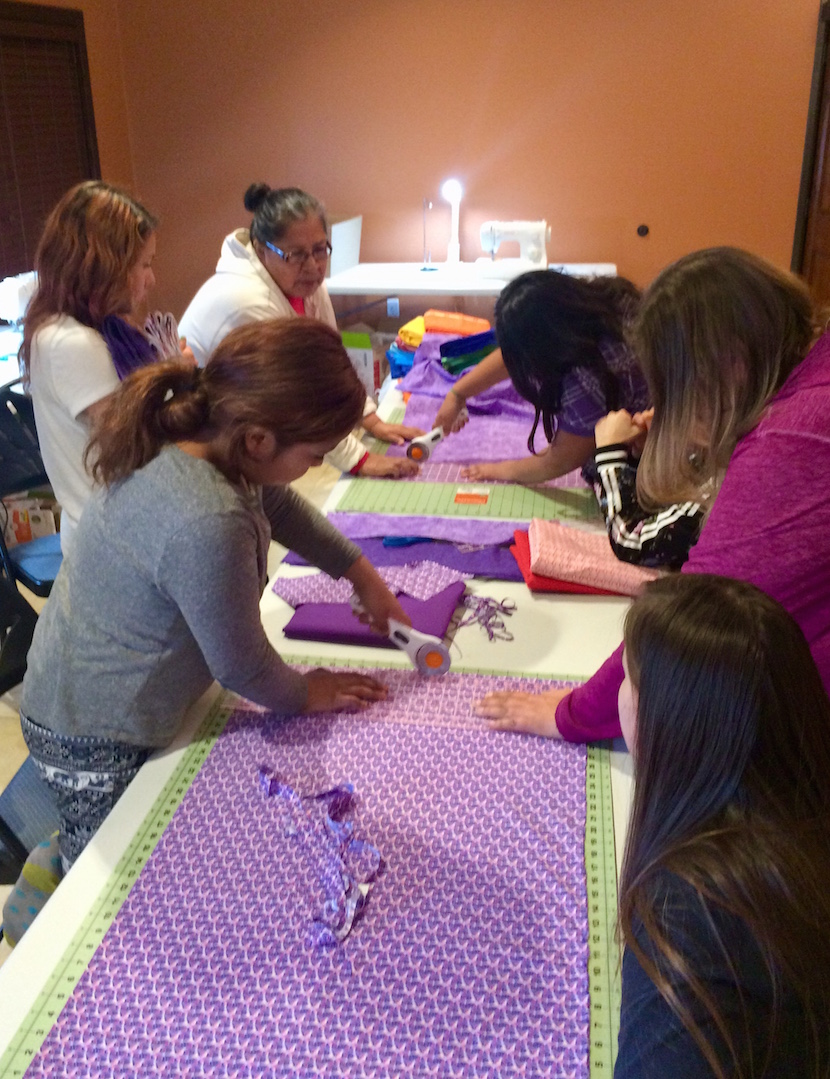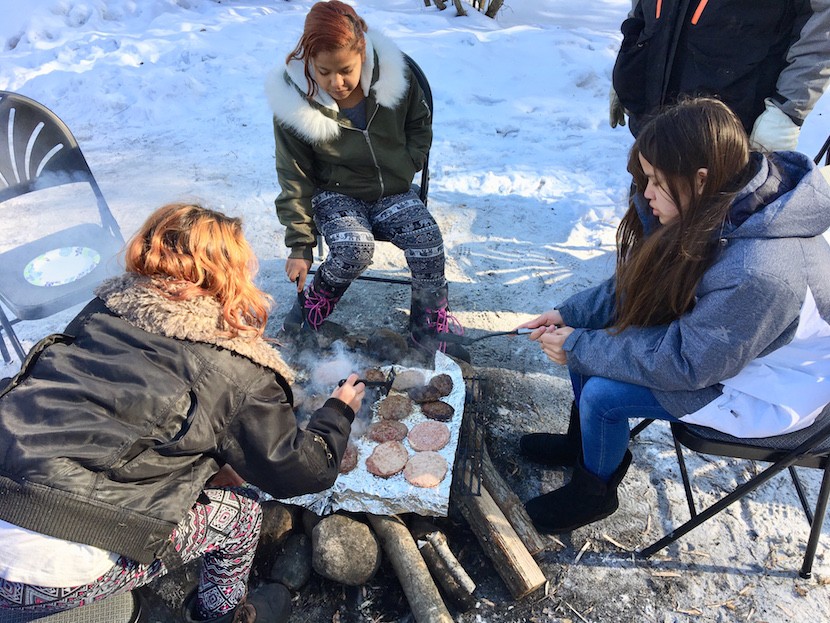
This winter, Nay Ah Shing Upper School students have been learning about traditional winter activities in the wild and peaceful setting of the Anishinaabe Izhitwaawin cultural immersion grounds in Rutledge.
Teachers, Elders, parents, and DNR personnel have participated as chaperones and imparted a range of knowledge. DNR Archivist Mike Wilson showed the kids how to skin an otter; Joyce Shingobe shared her expertise in sewing and beading; Duck White helped students learn to identify trees and learn their uses; Waabishkigaabaw gave lessons in Ojibwemowin; George Premo taught students to make traditional asemaa from red willow.
Conservation officers have stopped by to talk hunting and fishing, and teachers like Julie Higgins and parents like Naomi Sam have helped kids learn to cook and bake. Principal Noah Johnson and Education Commissioner of Rick St. Germaine have spent time at the camp making fires, leading talking circles, and sharing their own knowledge of the outdoors as well as academics.
Each camp begins with a tour of the facility and preparation of personal sleeping spaces, followed by camp orientation, fire building, and an opwaagan (pipe) ceremony.
Next students help with meal preparation and clean up before heading outside to learn about the forest. After visits with guest teachers and an evening meal, everyone takes part in a feather circle to reflect on the day’s activities.
Before lights out, students have personal time to journal, have a snack, or play a board game. (One group of boys played the moccasin game for two and a half hours!)
Adults, chaperones, and staff debrief each day to determine how to improve logistics, activities, and the overall experience for students.
So far, Rick said, the camps have been a highly successful venture. The students have responded well and completed the objectives:
— communicate openly in a positive manner
— build trust and new relationships
— accept responsibility for the many tasks at the camp
— learn about the forest and lands around the center
— respect the Ojibwe culture and language
“Most students were very vocal in their wish to continue this different way of learning,” Rick said.
Rick developed the idea along with school staff in order to impart historic knowledge and values with the aim of varying the school’s approach to building self-esteem and improving behavior.
As they learn through activities in the forest, at the fire ring, and inside the beautiful new center, attention is also given to building relationships, trust, and care for others.
Building fires, friendships
For school counselor Julie Higgins and sixth-grade teacher Bambi O'Hern, the experience has been valuable for students and staff alike.
Bambi enjoyed watching her students learn to build a fire. "It's a valuable skill, but more importantly, they're learning to get along and work together. I thought it was a wonderful experience, a great learning opportunity for how to behave and how to handle new situations."
When her class returned to Nay Ah Shing after their three-day camp, she asked them what they'd like to do at future camps in the spring, summer, fall, and winter. "We want it to be student-driven," she said.
Julie was struck by the way students strengthened old friendships and built new ones in a unique setting.
Not everything has gone according to plan, but that's okay too. "Rick told a story after the first group went to camp," said Julie. "As soon as they got outside to start learning about the woods, they started throwing snowballs and jumping in the snow."
Rick's conclusion? "It was wonderful!"
'Therapeutic milieu'
Rick was inspired by the “therapeutic residential milieu” model developed for American Indian students in South Dakota in the 1990s and at his home reservation, Lac Courte Oreilles, in the 1980s.
Rick observed and participated in LCO’s “Wenabozho Waakaa’igan.”
“At WW, students were placed in a foster home owned and operated by a remarkable Ojibwe woman with valuable experience in alcohol recovery programs,” Rick said. “Children were deeply troubled with family dysfunction, trauma, and serious disruption, and often in the corrections system. WW provided a safe and warm environment, which was programmed with a wide variety of therapeutic activities.”
Among those activities were meal preparation, washing dishes, chores, personal hygiene, board games, school work, learning the forest ways, hunting and gathering, firewood and fire, sweat lodge ceremonies, pipe blessings, feather circle talks, sessions with respected elders, trust-building activities, reflection time, speaking tours, and field trips. Numerous community volunteers contributed to the positive experience on a regular basis.
Rick is interested in creating such a foster home facility for students in severe need of a therapeutic residential milieu approach where there is value in creating quality new relationships and a quality environment. In the meantime, the Winter Camp Anishinaabe Izhitwaawin experience will help Nay Ah Shing employees create elements in the process.
Spring, summer, and fall camps are already in the planning stage, along with shorter overnight camps for lower school students.
Photos: Beading, sewing, reading, making asemaa, building fires, skinning otters, making swamp tea, playing the moccasin game, cooking partridge — many skills have been learned and memories made at Nay Ah Shing winter camps.

